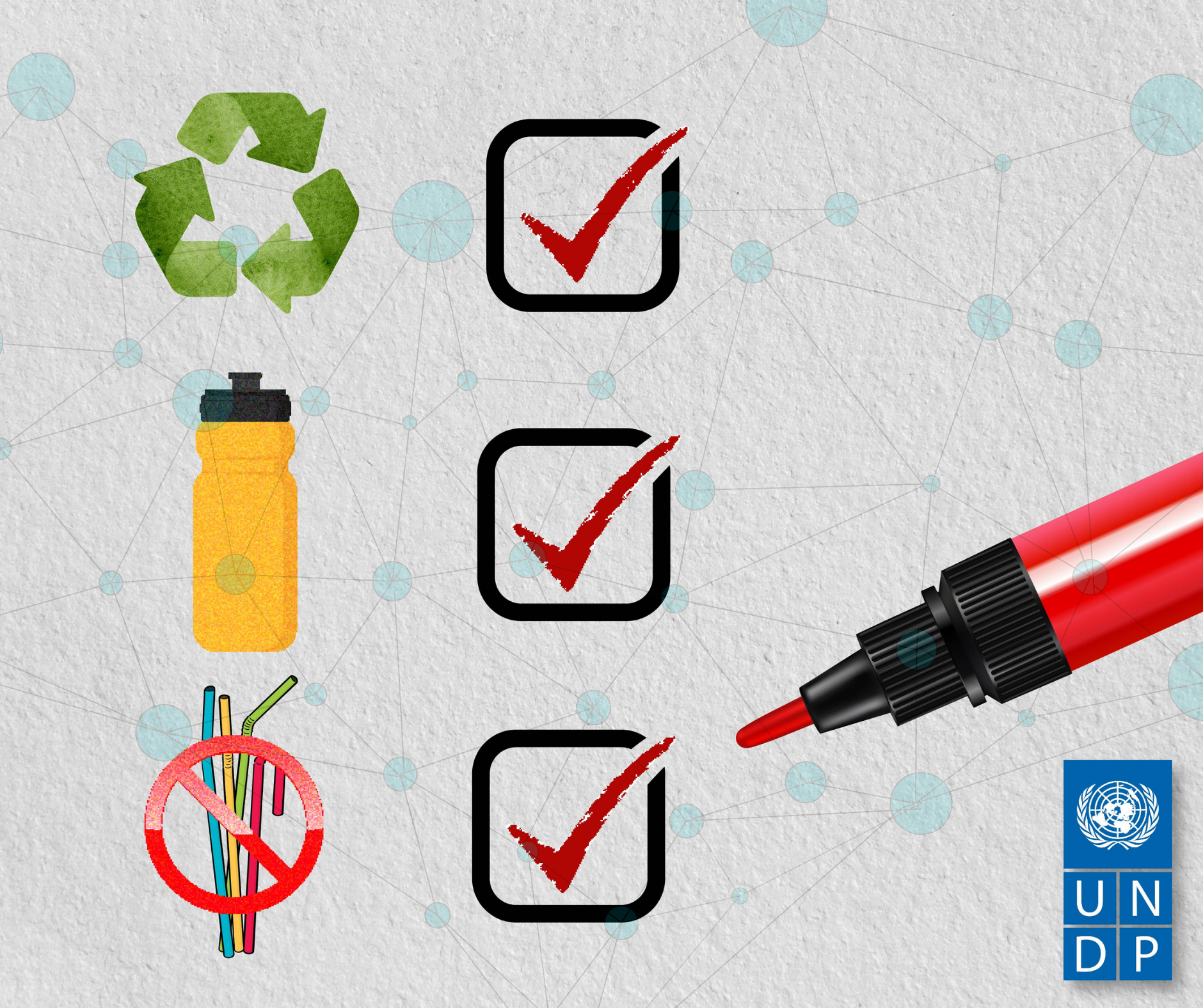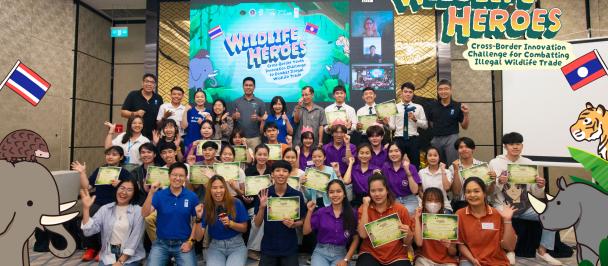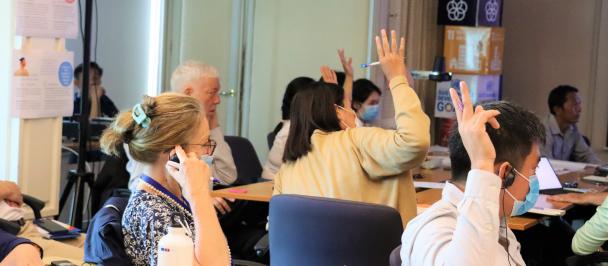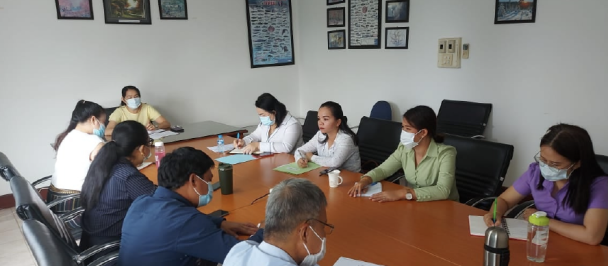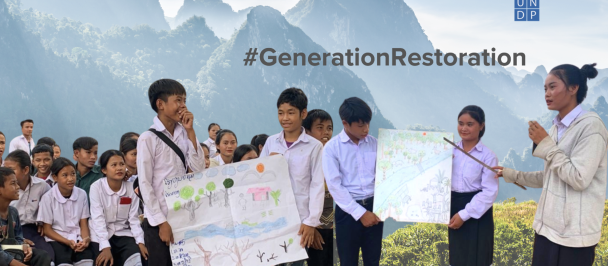This blog is the first part of a two-blog series that shares UNDP Lao PDR Accelerator Lab journey in co-designing a plastic-free meeting checklist to mitigate plastic pollution at workplaces and meetings.
Designing a path to walk the talk: a guideline on eliminating single-use plastics in meetings and workplaces.
July 23, 2021
Image by: UNDP Lao PDR
Recalling my first workshop on climate action, I was surprised by the amount of single-use plastic thrown away at the end of the meeting. That experience made me ponder on how we could walk the talk if our discussion session somehow contributes to plastic pollution.
Most conferences and workshops generate more than 80 percent of single-use plastic waste, from plastic backdrops to water bottles and candy wraps. The number of plastics left after the meeting can multiply and create a considerable consequence without immediate action.
Understanding the littering pattern of single-use plastic is not new to the work of UNDP Accelerator Lab. From the That Luang experiment in 2019, we found that most plastic waste came from vendors as there were no strict regulations and affordable alternatives. Further, our behavioral experiment on household products in 2020, informed us that daily household products such as small sachets of shampoo and soap were highly used. Perceived as being cheaper and more available, these packaged products were preferred by particularly low-income families. The alternatives will only be accepted if they are cheaper and trustworthy.
Looking at possible approaches to collectively advocate for a single-use plastic-free community, our team decided to focus on the low-hanging fruits at meetings and workplaces. We collaborated with the Department of Environment of the Ministry of Natural Resources and Environment (DOE, MONRE) to draft a possible path for walking the talk.
Brainstorming
We began by developing a baseline survey with DOE and our consultant- Econox. The survey aims to first understand the knowledge among DOE and relevant UNDP partners on the plastic crisis and the present pattern of single-use plastic consumption. After a review of the gathered data we designed a checklist.
The online survey was undertaken between April and May of 2021. It included 80 responders from the Ministries of Natural Resources and Environment; Information, Culture, and Tourism, Post and Telecommunications; Labor and Social Welfare, and the Lao National Chamber of Commerce and Industry.. Additionally, our survey was shared with our colleagues at the country office, and our fellow UN agencies based in Lao PDR, such as WFP and UNRCO. Other organizations also include GGGI, and the local State Enterprise, Lao Telecom.
Findings:
1. The level of awareness on plastic is still inadequate
The majority of respondents stated that they are concerned about plastic waste because it is a huge worldwide issue, such as air pollution from plastic garbage burning and micro-plastic contamination in the air, rivers, and food. Some issues however, have received less attention, such as the risks posed by plastic pollution to land animals, marine creatures, birds, and the food chain in the environment; climate change; and plastic debris in wilderness habitats such as forests, lakes, and rivers.
2. There has been limited action to reduce plastic pollution at the workplace
According to the survey results, the steps to minimize single-use plastic waste differ as well. Most participants avoid plastic bags by carrying their tote bag or other forms of reusable bag. Followed by separating their waste, such as segregating mostly recyclable plastics from other waste, and bringing their bottles to replace the single-use plastic ones.
There were typically awareness-raising efforts to minimize single-use plastics in the majority of the respondents' offices; however, these were not implemented as rules. When it comes to trash segregation, the majority of respondents stated that their offices had segregated bins. Nonetheless, garbage gathered in separate containers is dumped into the same place.
3. Most meetings still prefer single-use plastic
Apart from backdrops and banners, plastic bottles, particularly tiny ones, are the most commonly used form of plastic at general meetings. Furthermore, the majority of the respondents' offices use tea and coffee plastic sachets, plastic garbage bin liners, candies in plastic wrapping, cutlery, and coffee stirring sticks.
What’s next?
Acknowledging the gaps and seeing areas for intervention, our next move is to work with DOE to design an appropriate checklist and awareness-raising materials to share with our development counterparts.
In our next and final blog of this series, we will take you on a journey of a collaboration with DOE, MONRE to provide plastic awareness training and to pilot the plastic-free checklist with our development partners.
-------------------------------------------------
Plastic-Free Meeting Pilot Project is a collaboration project between UNDP Accelerator Lab and the Department of Environment, Ministry of Natural Resource and Environment (DOE, MONRE) to eliminate single-use plastic from offices and promote plastic-free meetings. The project's output will include creating a comprehensive checklist and guideline for plastic-free events, as well as meetings, while promoting this model to increase single-use plastic awareness for the public and private sectors working with UNDP and DOE, MONRE.
Written by:
Khavi Homsombath, Head of Experimentation, Accelerator Lab, UNDP Lao PDR
The views expressed in this article are those of the author alone and not the United Nations Development Programme.

 Locations
Locations